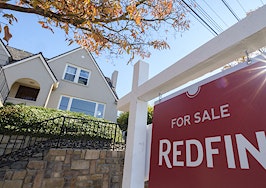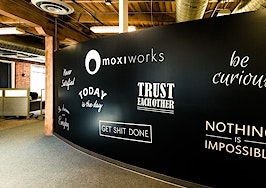Inman events are the best way to connect, learn and grow. Join us Oct. 26-28, for Inman Connect Las Vegas, in-person or virtually. Then, continue to gain insights, strategies and tactics to keep your business growing and make 2022 your best year ever with a full line-up of 2022 events! Save the dates and register now!
Doug Brien, CEO of Mynd, and Gary Beasley, CEO of Roofstock, shared some key tidbits of knowledge about investing in the single-family rental space with Inman Connect Las Vegas attendees on Wednesday at a panel called “What’s Next for Real Estate Investing and Property Management.”

Kendall Bonner at Inman Connect New York | Credit: AJ Canaria of MoxiWorks
Kendall Bonner, broker/owner of RE/MAX Capital Realty moderated the panel.
Brien was motivated to get into real estate investing after some years as a field goal kicker for the San Francisco 49ers.
“I didn’t know how long I was going to play, and I didn’t want to be one of those people who had that experience and kind of lost it in terms of building wealth,” Brien explained. So, he went ahead and invested his first Super Bowl check in some real estate.
Over the course of Brien’s 12-season football career, he played for seven teams in the National Football League: San Francisco 49ers (1994-95), New Orleans Saints (1995-2000), Indianapolis Colts (2001), Tampa Bay Buccaneers (2001), Minnesota Vikings (2002), New York Jets (2003-04) and Chicago Bears (2005). The 49ers won Super Bowl XXIX against the San Diego Chargers in 1995 when Brien was on the team.
Brien and Beasley actually go way back, having served as co-CEOs together of Waypoint Homes, a fully integrated real estate leasing and management company. The duo were eager to share their optimism for investing in the single-family rental market with the Inman Connect Las Vegas audience.
“It’s a great asset class on a risk-adjusted basis,” Brien asserted. And technology that’s been developed in recent years by companies like Roofstock and Mynd has made investing in the asset class much more accessible, the speakers argued.

Doug Brien
Roofstock’s online marketplace allows investors to treat single-family rental homes like stock, or a liquid investment, Beasley said.
“[Properties] can be traded sight unseen from anywhere in the world,” he added.
Mynd also helps investors operate in different markets by giving them all the necessary tools to do so in one place.
“We now help investors buy, with financing, with insurance, with management, and we do it across 25 markets,” Brien said.
The speakers agreed that the most recent big disruptor in the single-family rental investment space was the emergence of cloud and mobile computing, which allowed companies to build out software to manage rentals at-scale.
“[It] creates an opportunity for lots of different business models to emerge,” Beasley said. “[New technology] actually does deliver a better customer experience and it’s much more efficient from a business standpoint.”
“The opportunity is immense if you’re an investor and you want to start deploying capital nationally,” Brien said.
 But Beasley added that new technology married with local real estate agent expertise creates the most beneficial outcomes for consumers looking to invest.
But Beasley added that new technology married with local real estate agent expertise creates the most beneficial outcomes for consumers looking to invest.
“I think there’s a way to be disruptive in this space without necessarily squeezing out current participants,” he explained.
Both speakers also said, for those looking for opportunities, now is still a great time to start investing in the space.
“I’m actively, personally, buying properties myself right now,” Brien said. “Yes there are opportunities … If you have a long-term view and the right financing … the risk is relatively low.”
Especially compared to about 10 years ago when investment risk was “extraordinary,” as Beasley put it, he said risk-adjusted returns today are “still quite good.”
“I think, generally, capital is pretty smart and I could say today there’s never been more interest in U.S. housing as an investable asset class,” Beasley added.













